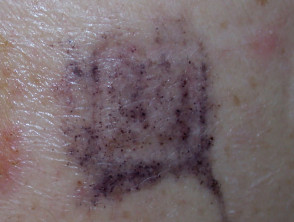No products in the cart.
Hair dye allergy connected to PPD
Many of you may have encountered a situation of irritation of the scalp and surrounding skin while dyeing your hair. If you have done allergy testing, you have probably heard hair dye allergy due to PPD.
What is PPD?
Paraphenylenediamine (PPD) is a chemical substance which is widely used in hair dye. This substance actually makes the hair dye look as natural as possible and not lose its shine and shade quickly.
PPD is also used in the textile industry as a dye, in dark colored cosmetics, for temporary tattoos known as henna tattoos etc.
The form of PPD that causes allergic reactions is actually that which is partially oxidized.
Who can be allergic to PPD?
Anyone can be allergic to PPD such as:
- The hairdressers themselves who deal with the hair dyeing process every day;
- Persons who dye their hair regularly, especially with dark nuances;
- Photographers who deal with photo films every day;
- Persons who have temporary black tattoos.
What are the clinical signs of hair dye allergy due to PPD ?
Signs of PPD allergy appear as acute, subacute or and chronic in areas that come in direct contact with the paint.
One of the most common signs is redness and burning in the area where the skin has fallen in contact with the paint, especially in the area behind the ears and neck. Some other, slightly more complicated cases appear with redness, peeling and even swelling of the eyelids, face and neck. On the other hand, in the case of individuals who have had a temporary tattoo, the marks may erupt after 1-2 weeks.
People who have PPD as part of their daily routine may be more likely to develop hand dermatitis. Keep in mind that allergies from PPD can cause signs like multiform erythema or contact urticaria.
How do you know if you are allergic to PPD?
There are 2 ways to find out if you are allergic or not to PPD;
1. The hair dye test / tattoo before use.
You can do this test at home or at the hairdresser before the dyeing process. It is enough that after you have mixed the paint ingredients (in very small quantities) to apply on your skin on the forearm or in the area behind the ear (in the size of a coin). During this time you have had no signs of irritation, the chances of you being allergic to PPD are very small. But if you are allergic, most likely, within a short time from the application of the paint you will notice redness, burning sensation or itching. Even if the signs appear within 72 hours but with lower intensity, you are still likely to be allergic.
2. Laboratory tests
This way of testing is more accurate and is performed through specific patches which use 2% PPD in petrolatum.
A negative response means that you can use PPD inks without fear of irritation.
A +/- response does not necessarily make you prone to PPD allergies but you are advised to be careful.
A positive answer of 1+ to 3+ indicates that you are more likely to be allergic, you have allergic contact dermatitis and therefore it is better not to use paints with PPD content.
How should you act in cases of allergies and what hair dye should you use?
If you are allergic to PPD and the hair dye comes in contact with the skin, rinse the affected area with plenty of water as soon as possible. Make compresses with 2% oxygenated water or dilute potassium permanganate (1: 5000).
If crusts have formed, soften by gently rubbing them with a piece of olive oil. In cases of aggravated irritations, in consultation with a dermatologist you can use ointments with corticosteroids or corticosteroids orally.
If you are allergic to PPD:
- Let your hairdresser know that you are allergic;
- Choose Semi-permanent paints (although 10% of people allergic to PPD may be allergic to this paint as well);
- Use paints that have para-toluenediamine sulfate (PTDS) instead of PPD (tolerated in 50% of people allergic to PPD).


